Brent Moffatt has experienced some of the highest highs and lowest lows that a life in body modification has to offer. You may recall him as a former world-record holder for his piercing exploits, as well as for his Golden Palace casino URL forehead tattoo, something he came to deeply regret — you can read his thoughts on that in an earlier “Skinvertising” article. After Brent read the story of Lesya getting her husband Ruslan’s name tattooed on her face, he felt obligated to talk about his own experiences as a cautionary tale. Those thoughts follow here as he sent them to me, with minimal editing. Brent and I have not always seen eye to eye, but I share his deep worry that it’s very difficult to predict one’s future, and that the excitement of youth often leads people down body modification paths they later find incompatible with their later lives. -Shannon

Above: Brent Moffatt over time.
Body Mod… Danger and Regret
By: Brent “The Human Pincushion” Moffatt
I was reading an article by Shannon Larratt about a young woman that had tattooed her husband’s name across her face. I was also read the comments after said article, and I was horrified that Jim Ward and I were initially the only ones to openly say that this was a bad idea. So I decided to tell a bit of my story of dangers and regrets as it pertains to “my life in body mod”. I have had many many modifications and have been involved in the world of body mod for a long time, and in that time I have gotten both good work and work that I wouldn’t wish on my worst enemy. Unfortunately in the days when I first became interested in mods there wasn’t a meaningful internet — it was just in its infancy — so there really was nowhere to turn to know what to do and how to do it. Luckily young people today have so many more resources. Most of my bad modifications came from lack of understanding, immaturity — #1 fault — and the use of drugs and alcohol — #2 fault. My early misadventures include,
- Scratcher tats done at parties while very drunk or stoned
- Self-done piercings on my arm that turned septic and almost required amputation
- Self-done tattoos while deciding if I had the talent to be a tattooist — I didn’t want to scar anyone else
Now these might not sound that serious in and of themselves, but they have left me with thousands if not tens of thousands of potential cover-ups, while the botched self piercings very well could have taken my life. I should also say that during this time I did have some minor professional tattoos done — for example, a small peace symbol on my arm, as well as my first facial piece, a small tribal design along the crest of my nose.
After all this I decided that piercing was to become my future career and after much training — thank you Keith Kennedy, and Wink Jefferies — I was off to work in Winnipeg (Manitoba, Canada). At the same time I unfortunately got hooked up in the rave lifestyle and started taking ecstasy on a daily basis in very large doses, so my thinking had to have been affected — drugs and mods don’t mix! In the midst of new friends, a new city, and a mountain of drugs, I became quite famous within the community, especially after breaking four World Records in piercings as a publicity stunt (at first) to increase my customer base. With my life in a crazy whirlwind the thought came to me that I needed to “look the part” and I started designing a full facial tattoo while harassing my local artist to do it for me.
After many talks he agreed to do the tattoo, and the deal was done. Looking back I only remember one person trying to talk me out of my decision. For that warning I have to say thank you to “Big Scary” Bob Wilson even though I didn’t listen — I admit I have a thick head even when not under the influence! Low and behold I was one of maybe two or three people in all of Winnipeg to have a full facial piece, and I definitely stood out in the crowd. In a way, I rather enjoyed the attention, both good and bad. I truly believed with all my heart and soul that this was to be my lifelong career, and in this career a facial piece seemed a must-have, like a three piece suit for a banker. The consequences of this fateful decision were yet to come.
After working in Winnipeg for a couple years I met a nice woman who I thought would be my lifelong mate. I wanted to do more for her than just have a 9-5 job, so after reading about a gentleman online who sold his forehead for advertising space — with temporary tattoos in his case — the thought came to me that I could do the same, but with a real tattoo. Maybe I could even make enough money to start my own piercing studio, which I thought would be much better for me and my lady.
My boss, Bob Wilson, told me I was crazy and that if I did this I’d be fired. Looking back I wish that I had listened, but since getting fired was basically the idea, the threat didn’t faze me in the least. Did I mention I’m stubborn? I went ahead and posted the ad on EBay and waited, but to my surprise there was absolutely no interest in the ad. A week passed after I’d posted it and I truly began to think that it wouldn’t happen — but then in the last ten seconds of the ad a place called Golden Palace snapped up my tattoo offer for the price of $10,000, and with that bid, I was jobless. My lady and I packed up our belongings and moved back to Regina Saskatchewan to open our own small piercing studio, and even though I had this idiotic tattoo across my forehead, I was sure the dream was coming to light.
Right when I thought my life was taking a turn for the better, to my great surprise it went just the opposite direction, and shortly after we got the studio up and running, our relationship ended and with it the studio folded like a cheap suit. I was left with nothing but this stupid tattoo for all my troubles. Shortly after this hit I also had the “good fortune” to learn that I had two forms of kidney disease and my days of being able to hold down a job were at an end — employment is impossible when your troubles start with ten surgeries in a one year, and get worse from there.
So there I am, with a full facial tattoo and “GoldenPalace.com” across my forehead in big block letters, the money long since gone, with no ability to support myself and no savings, living in bible belt Saskatchewan, the only person in the area with this much ink above the neckline, trying to cope with both a serious illness and the aftermath of a horrible ecstasy addiction. Are you at all surprised that I ended up in the hospital due to depression? Amazingly, this turned out to be a good thing — while there met the current love of my life and we were soon dating. Of course the universe wasn’t going to make it easy for us though! She comes from a very straight-laced family who believes “money rules over all” and the minute they met “the freak” they did everything in their power to get me out of her life as fast as possible.
Luckily there is nothing love can’t conquer. However, it’s not as easy as that, because when you love someone you would rather have a truck run over your nuts than have them in pain, and I knew that her family’s disapproval of me was putting her in pain. In an attempt to ingratiate myself I asked a friend of mine if he would remove my forehead tattoo. So off to Calgary I go in hopes that this gesture would help bridge the gap between her family and myself. I knew there would be some pain involved and was prepared for that — you’ve probably clued in by now that I have a very high threshold for pain — but little did I know the whole new world of pain that tattoo removal would introduce me to. After the first treatment was done I woke the next morning to my face swollen to the size of a basketball. I could barely see out of my swollen eyes and crawled back to Regina and the loving arms of my fiancée. I felt like I hadn’t accomplished because even though the tattoo was much lighter, it was still for all intents and purposes there.
A few years later my kidney diseases eased up a bit and I desperately wanted to get back to some form of employment. By then the body mod scene in Regina was overrun, like most large cities, and the probability of making a living were slim to none so I took every last cent that I had and went back to school to become a phlebotomist — classic choice for a body piercer don’t ya think? After about a year of living on Kraft Dinner so that I could pay for school I graduated and began looking for work. With my past achievements I thought I had a impressive resume and truly believed I would have no problem getting a job, but after dropping my resume at every possible place and never ever receiving even a call back, much less an interview, it finally struck me that the only thing holding me back were my tattoos. There was no way in hell anyone was going to hire me as a phlebotomist looking like this. I don’t give up easy so I’m going back to school again but this time as a youth drug counsellor. I believe this field will be much more accepting of my look and my past, but damn, it would be so much easier on so many fronts if I had just left my face alone.
Ultimately I’m writing this for the youth of today, but it’s a message for anyone thinking of getting any sort of permanent modification. Don’t let any twit out there try and tell you that a tattoo isn’t permanent, because it is. Yes, we have ways of removing some tattoos, and some colors are easier than others, but when you have a tattoo removed it’s painful, you risk scarring and other complications, and it is never 100% guaranteed successful. If you want a tattoo expect it to be there for the rest of your life.
To be clear, I am not against large scale visible tattoos and or any extreme modification. What I am against is the myriad of people out there that seem to think it’s acceptable to promote things like facial work to the masses when a lot of the readers are young impressionable youth who do not realize that life can turn on a dime and who you thought you were yesterday may not be who you are tomorrow. Who reading this can say with 100% honestly that they KNOW what they will be doing for a living in ten years? Or can say that they know without a doubt that they will be with that same person in ten years? In twenty? In forty?
Referring back to the Russian couple who tattooed there lovers names on their faces, I’ll give some Canadian statistics.
- 41% divorce rate in Canada in 2008
- Russia has the third highest divorce rate in the world behind the U.S.A and Puerto Rico
- Average adult in Canada will change careers once every ten years
None of those people got married planning on getting divorced — they all thought “till death do us part”. All you have to do is look at these FACTS, and if you are honest with yourself you will say that putting a lover’s, husbands/wife’s, or GF/BF/etc’s name anywhere on your body — much less your face — is a bad idea. And again, if you look at the facts and are honest you can’t say with 100% certainty that you will be in the body modification industry (or work somewhere that tolerates it) for the rest of your life. A facial tattoo or any extreme visible mod is something that should take a lot of thought. Of course I hope that couple are together for the rest of their lives, and open a studio that is around till the end of time, but statistically the chances of this are slim. What happens if they break up? Do you think her next boyfriend is really going to want to stare at another guys name while making love to her? And what if god forbid something happens that she isn’t able to tattoo anymore? Could she get a job as a nurse in Russia? These are the types of question you MUST ask yourself before you get anything like this done, plain and simple.
I wish I would have asked myself these questions years back!
Thank you for listening and now I will wait for the hate mail.
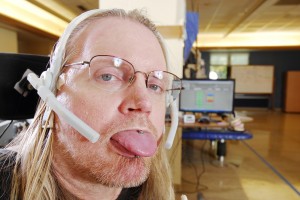
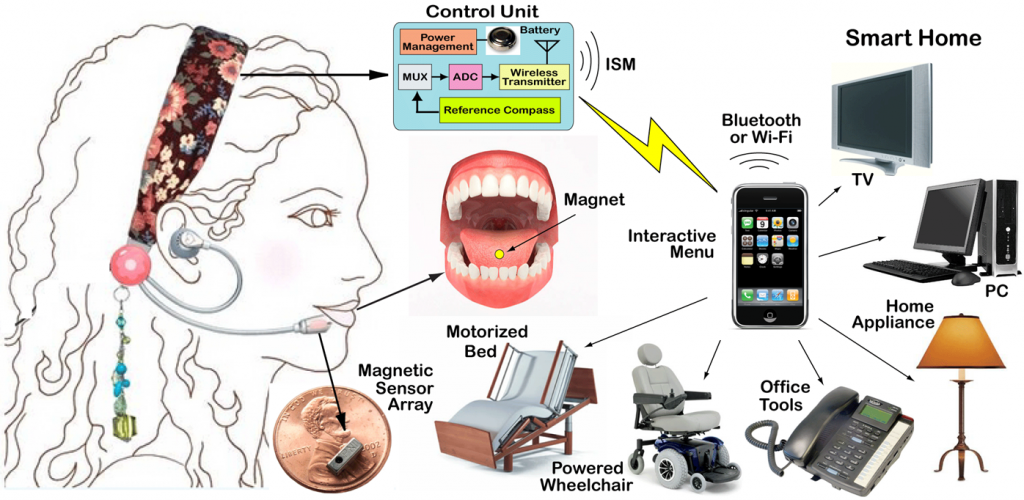
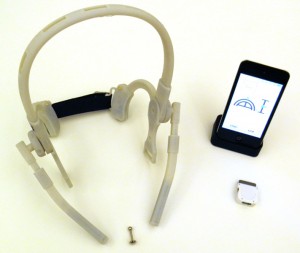

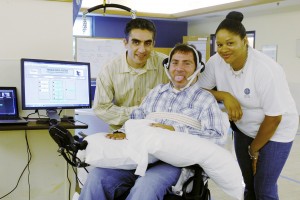

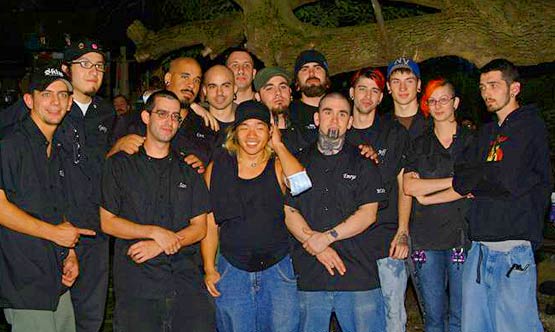
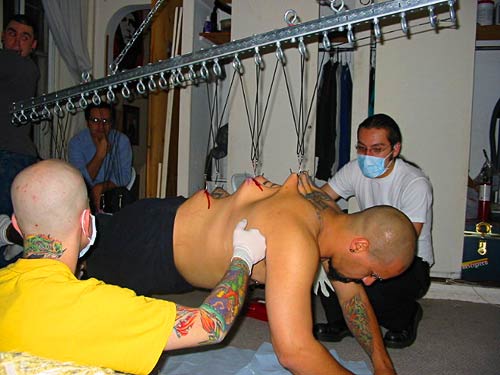


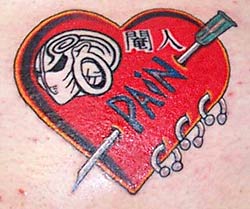
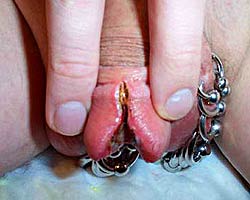
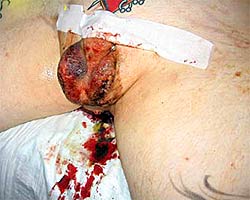

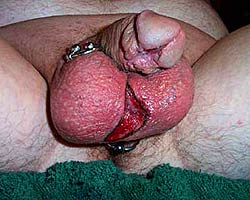
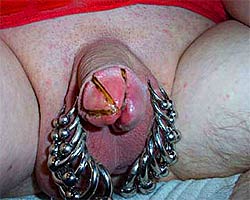
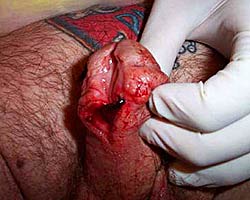
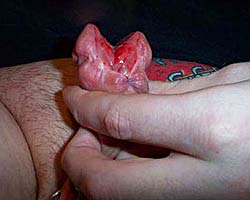

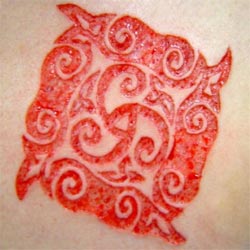
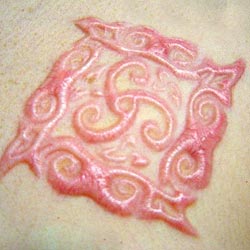
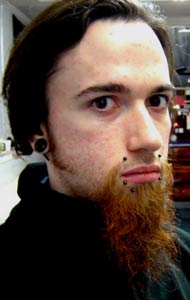
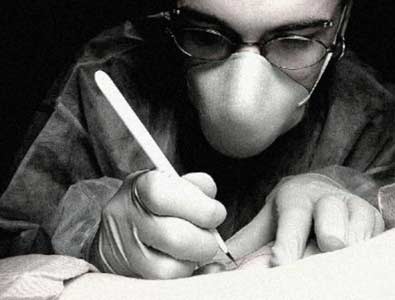
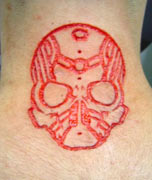
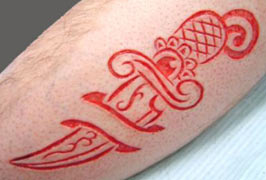
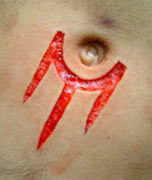

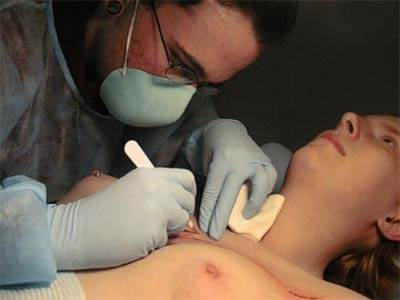

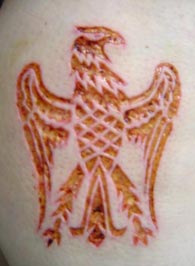

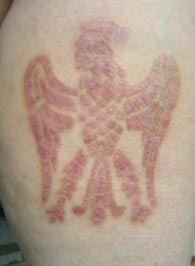

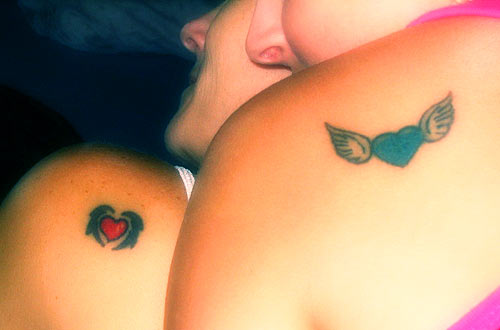
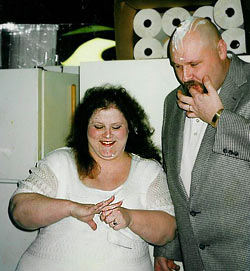
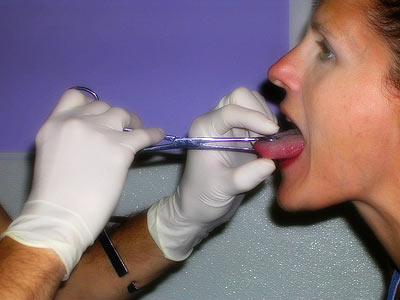
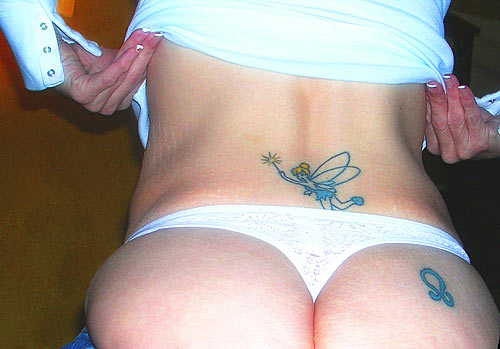


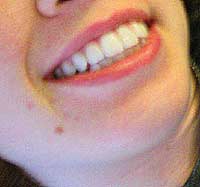


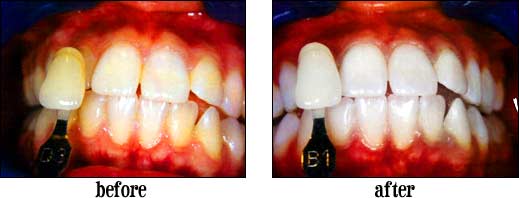


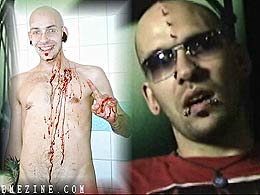
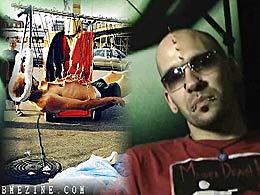
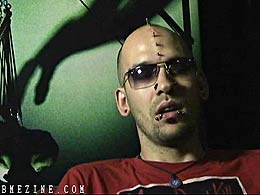


 Judaism has a long history of distaste for tattoos and piercings. It is my understanding that this stems from the Jewish concept that we are created b’tzelem Elokim (in the image of God) and that our bodies are to be viewed as a precious gift on loan from God, entrusted into our care, but not our personal property to do with as we choose. This distaste grew stronger with the Holocaust and the tattooing that was forced upon the Jews in the prison camps.
Judaism has a long history of distaste for tattoos and piercings. It is my understanding that this stems from the Jewish concept that we are created b’tzelem Elokim (in the image of God) and that our bodies are to be viewed as a precious gift on loan from God, entrusted into our care, but not our personal property to do with as we choose. This distaste grew stronger with the Holocaust and the tattooing that was forced upon the Jews in the prison camps. It is not prohibited to bury someone who has tattoos or body piercings in a Jewish cemetery. Although the Torah is interpreted by some to prohibit making a permanent tattoo on one’s body, those who violate this prohibition may still be buried in a Jewish cemetery and participate fully in all synagogue ritual.
It is not prohibited to bury someone who has tattoos or body piercings in a Jewish cemetery. Although the Torah is interpreted by some to prohibit making a permanent tattoo on one’s body, those who violate this prohibition may still be buried in a Jewish cemetery and participate fully in all synagogue ritual. “After an unfortunate tragedy where a close modified friend of mine committed suicide, his family was allowed to bury him in an orthodox Jewish cemetery. He was practically fully suited in tattoos and wore three earrings in each earlobe. At the funeral service I spoke at length with the orthodox rabbi who was performing the service about Jews and body modification. He told me that these misconceptions were not only outdated, but any Jew who believed in them was not following the ways of God. Jews are a very accepting and understanding people. Who are we to judge one for intentionally changing one’s body to fulfill their own desires?”
“After an unfortunate tragedy where a close modified friend of mine committed suicide, his family was allowed to bury him in an orthodox Jewish cemetery. He was practically fully suited in tattoos and wore three earrings in each earlobe. At the funeral service I spoke at length with the orthodox rabbi who was performing the service about Jews and body modification. He told me that these misconceptions were not only outdated, but any Jew who believed in them was not following the ways of God. Jews are a very accepting and understanding people. Who are we to judge one for intentionally changing one’s body to fulfill their own desires?” Deliberate, permanent disfigurement of the body would be prohibited. But such practices as ear piercing and cosmetic surgery (such as elective rhinoplasty) are not prohibited. The purpose of cosmetic surgery is to make the body more beautiful, not to disfigure it. (from
Deliberate, permanent disfigurement of the body would be prohibited. But such practices as ear piercing and cosmetic surgery (such as elective rhinoplasty) are not prohibited. The purpose of cosmetic surgery is to make the body more beautiful, not to disfigure it. (from  What puzzles and disturbs me is the quote from a rabbi stating that such practices as ear piercing and plastic surgery(1) are not prohibited because they are meant to beautify and not to disfigure. Who is to say that the purpose of my body modifications are not to make the body more beautiful? Is this for a rabbi to decide? I believe that the decision of what makes my body more beautiful is my own. Why is plastic surgery regarded as acceptable and other forms of body modification are not? What about circumcision which is a permanent modification? Who makes those decisions?
What puzzles and disturbs me is the quote from a rabbi stating that such practices as ear piercing and plastic surgery(1) are not prohibited because they are meant to beautify and not to disfigure. Who is to say that the purpose of my body modifications are not to make the body more beautiful? Is this for a rabbi to decide? I believe that the decision of what makes my body more beautiful is my own. Why is plastic surgery regarded as acceptable and other forms of body modification are not? What about circumcision which is a permanent modification? Who makes those decisions? Circumcision is also becoming a challenged ritual within Judaism as more and more Jews regard this practice as a social choice. This is a major body modification and disfigurement to a small child that is not given the choice to modify. It is also common practice among non-Jews to circumcise a male newborn penis, and this practice is not specifically Jewish, though it is common practice among Jews specifically. For more information on the complex issue regarding facts and myths of Jewish ritual circumcision, I invite you to visit
Circumcision is also becoming a challenged ritual within Judaism as more and more Jews regard this practice as a social choice. This is a major body modification and disfigurement to a small child that is not given the choice to modify. It is also common practice among non-Jews to circumcise a male newborn penis, and this practice is not specifically Jewish, though it is common practice among Jews specifically. For more information on the complex issue regarding facts and myths of Jewish ritual circumcision, I invite you to visit  For many people, conscious modification has become a way for them to take ownership of the beauty of their own bodies. For a very long time I felt uncomfortable in my own body. I was too fat, too short, my breasts were droopy — I could come up with a list a mile long. I discovered through modification that I loved my own body more when I got to choose what was happening to it. I would not knowingly disfigure my body. I intend to beautify it at my discretion. I am not the only one and I am far from the only modified Jew. By choosing to tattoo my body, I also feel that I am reclaiming this ritual for beauty rather than the hate and disrespect that was the intent of the Nazis forcibly tattooing the Jews during the holocaust.
For many people, conscious modification has become a way for them to take ownership of the beauty of their own bodies. For a very long time I felt uncomfortable in my own body. I was too fat, too short, my breasts were droopy — I could come up with a list a mile long. I discovered through modification that I loved my own body more when I got to choose what was happening to it. I would not knowingly disfigure my body. I intend to beautify it at my discretion. I am not the only one and I am far from the only modified Jew. By choosing to tattoo my body, I also feel that I am reclaiming this ritual for beauty rather than the hate and disrespect that was the intent of the Nazis forcibly tattooing the Jews during the holocaust. My Judaism and my body modification go hand in hand for me. They are both part of who I am and how I represent myself. I am a tattooed Jew. I am proud of both of these facets of my life. I am not ashamed to go to Shul and I am not afraid of the questions. What I dislike is the assumption that I am not as good a Jew because of my modifications. I completely disagree. What I dislike is the prejudice my own Jewish people bestow upon me, and others, for choosing to reclaim the ancient art of body modification. This in itself does not convey the Judaism of acceptance that has always been expressed to me in Shul. I believe this inter-judaic prejudice stems from a sociological prejudice thinly veiled by a misunderstood religious excuse.
My Judaism and my body modification go hand in hand for me. They are both part of who I am and how I represent myself. I am a tattooed Jew. I am proud of both of these facets of my life. I am not ashamed to go to Shul and I am not afraid of the questions. What I dislike is the assumption that I am not as good a Jew because of my modifications. I completely disagree. What I dislike is the prejudice my own Jewish people bestow upon me, and others, for choosing to reclaim the ancient art of body modification. This in itself does not convey the Judaism of acceptance that has always been expressed to me in Shul. I believe this inter-judaic prejudice stems from a sociological prejudice thinly veiled by a misunderstood religious excuse. My family ignores it. Don’t ask, don’t tell — sound familiar? — but still love and respect me as who I am. My family’s beliefs are those of conservative Jews and I respect them for that. However, I follow more of a Reconstructionist view. Reconstructionists define Judaism as the evolving religious civilization of the Jewish people and most Jewish people, including Reconstructionists, no longer accept its binding authority. While Reconstructionists are lovers of tradition and support community celebration of the Jewish sacred year and life-cycle events, we also believe that the face of the Jewish community is changing and that individuals have the right to adapt Jewish tradition to new circumstances. That doesn’t make us any less Jewish than those who live by Conservative or Orthodox law (although there would be plenty of argument within Judaism about this).
My family ignores it. Don’t ask, don’t tell — sound familiar? — but still love and respect me as who I am. My family’s beliefs are those of conservative Jews and I respect them for that. However, I follow more of a Reconstructionist view. Reconstructionists define Judaism as the evolving religious civilization of the Jewish people and most Jewish people, including Reconstructionists, no longer accept its binding authority. While Reconstructionists are lovers of tradition and support community celebration of the Jewish sacred year and life-cycle events, we also believe that the face of the Jewish community is changing and that individuals have the right to adapt Jewish tradition to new circumstances. That doesn’t make us any less Jewish than those who live by Conservative or Orthodox law (although there would be plenty of argument within Judaism about this). I think that the belief that body modification is prohibited by the Torah is antiquated, just as other Biblical laws are (and have thus been adjusted to fit modern times). Judaism is evolving in some sects; no longer do we have to hide what may be seen as “against the Torah” to practice our faith. It is quite a relief to do so. If you choose to practice your faith, there are many ways to do so. When you are dealing with Orthodox, Reform, Reconstructionist and Conservative movements, we will not agree on each others interpretation of the Torah.
I think that the belief that body modification is prohibited by the Torah is antiquated, just as other Biblical laws are (and have thus been adjusted to fit modern times). Judaism is evolving in some sects; no longer do we have to hide what may be seen as “against the Torah” to practice our faith. It is quite a relief to do so. If you choose to practice your faith, there are many ways to do so. When you are dealing with Orthodox, Reform, Reconstructionist and Conservative movements, we will not agree on each others interpretation of the Torah. Body Modification is just as much a part of my life as my faith in Judaism. I believe that my modifications beautify my body and bring joy to my life. They do not take away from my faith in God. My personal practice allows me to be who I am, and I wouldn’t have it any other way.
Body Modification is just as much a part of my life as my faith in Judaism. I believe that my modifications beautify my body and bring joy to my life. They do not take away from my faith in God. My personal practice allows me to be who I am, and I wouldn’t have it any other way. Liz Polay-Wettengel (iam:TattooedRedhead) is an executive general manager in Boston Massachusetts where she lives with her husband and two cats. She has a professional background in the music business and writes for several online blogs. Liz has been an active member of the IAM BME community since 2000 and currently runs the membership sponsorship forum and the
Liz Polay-Wettengel (iam:TattooedRedhead) is an executive general manager in Boston Massachusetts where she lives with her husband and two cats. She has a professional background in the music business and writes for several online blogs. Liz has been an active member of the IAM BME community since 2000 and currently runs the membership sponsorship forum and the